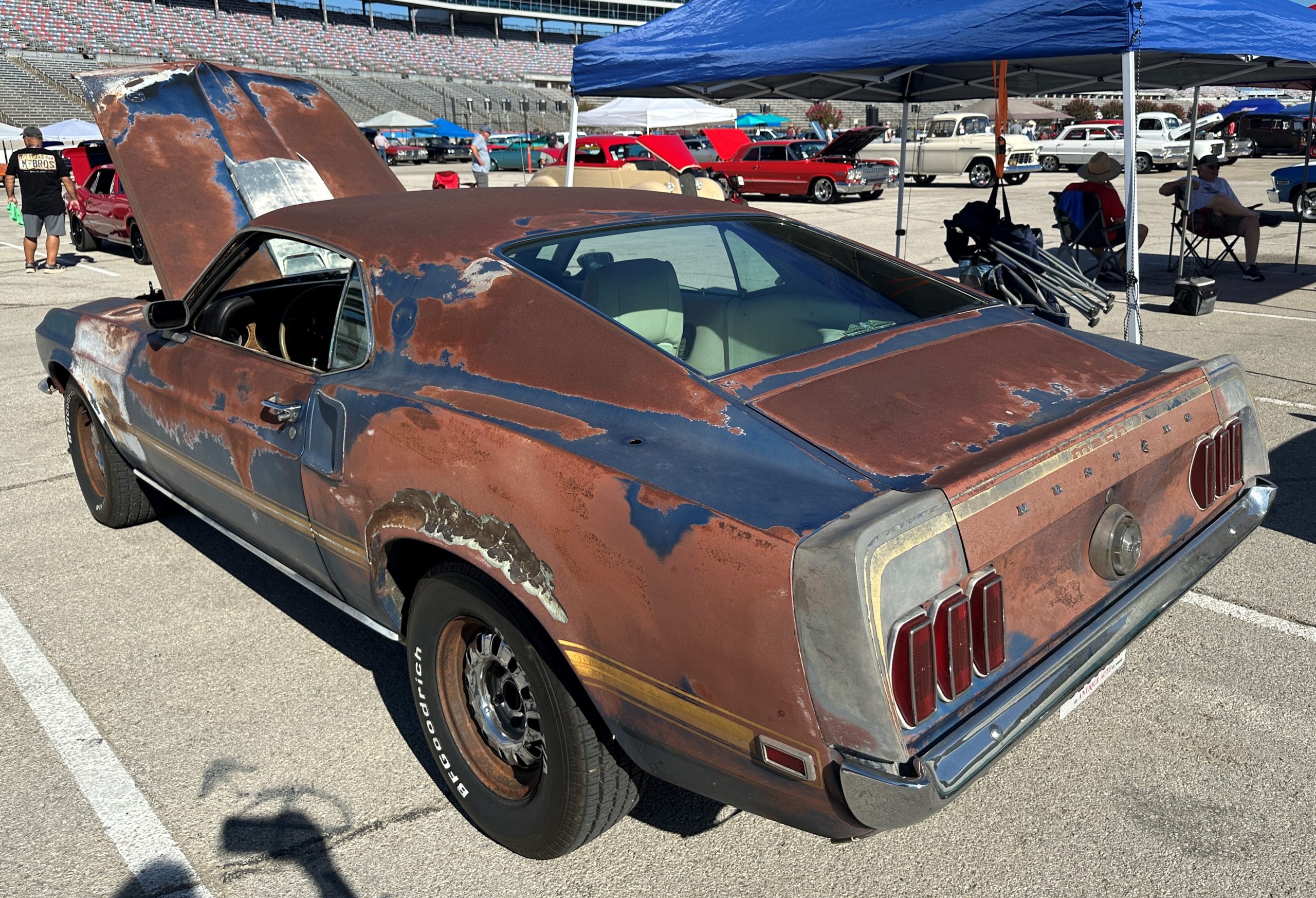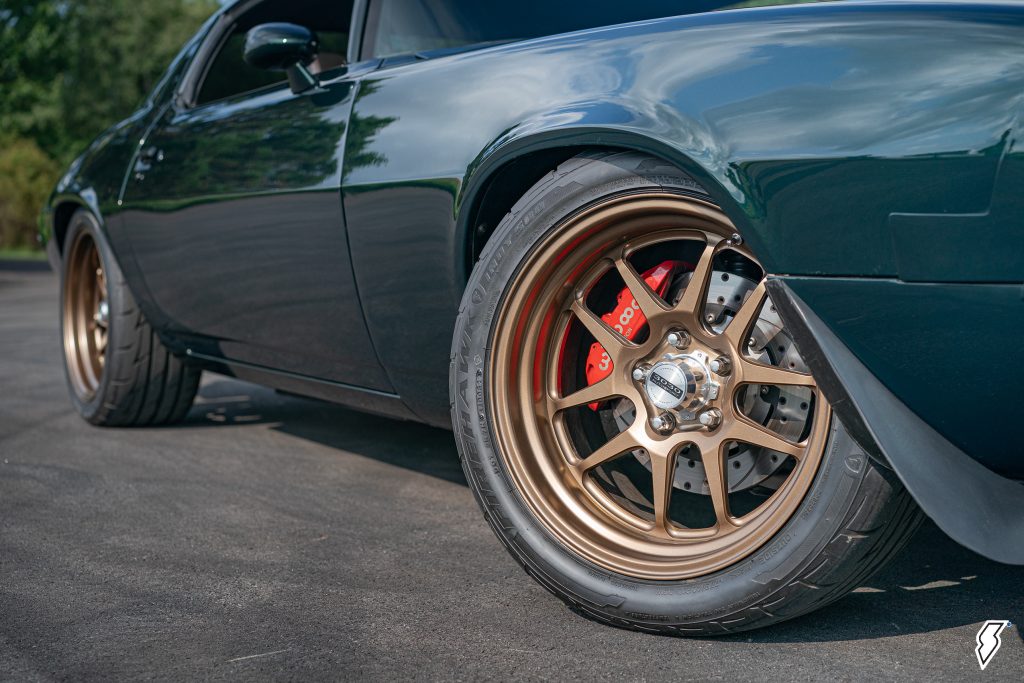Many of us remember a time when having a CD player in your car was considered peak automotive tech.
Heck, some of us even recall fiddling with a manual choke during chilly commutes.
So when the Summit Racing social media folks posted the following question to their fans:
What’s the Greatest Automotive Innovation in Your Lifetime?
…We were excited to see the reader contributions roll in.
As we always do, we compiled a Top 10 List of our favorites below. Take a gander and see if you agree with the choices. And if you’ve got any better examples, let us hear about it in the comments section at the bottom of this article.
***
10. Battery Powered Tools

“Powerful long lasting battery tools are such an upgrade from air.” – Will B.
We were pleasantly surprised to see this topic brought up, and several folks echoed similar sentiments as well.
Not too long ago, mechanics had to rely on pneumatic tools for many automotive jobs. Although air power is reliable and efficient, it can also be cumbersome, expensive, and complex. Modern battery powered hand tools changed all that.
Instead of firing up a massive compressor and dragging an air hose across your shop floor, now you can simply slap-in a new battery and get to work. In short, battery-powered tools can make mechanic’s life easier while making them far more productive too. That’s a win-win in our book.
***
9. Metallurgy & Corrosion Protection

“Car bodies that wouldn’t rust out 10 years after buying them off the showroom floor.” – Alex C.
This one’s really, really important and we’re honestly surprised it wasn’t mentioned more often. Perhaps folks are starting to get used to the effectiveness of modern EDP coatings, galvanizing protection, and corrosion inhibitors?
But back in the day, many vehicles were forced into scrapyards with perfectly good drivelines, simply due to rust-riddled bodies and corrosion-compromised frame sections. Thankfully modern metallurgy has helped prevent the incessant tinworm from taking such a harsh toll.
Sure, rust never sleeps—but at least nowadays it may hit snooze for a bit.
***
8. The Small Block Chevy V8

“V8 engines in Chevrolets beginning in 1955. The rest is history.” – David C.
OK, we knew that plenty of folks would offer-up the venerable SBC as a response to this question.
And plenty people did.
While there were certainly overhead valve V8 engines before the ubiquitous small block Chevy V8 arrived, the sheer volume at which GM produced these motors revolutionized not only the consumer automobile market, but the racing and performance industries as well.
Compact, reliable, affordable, and with plenty of potential, we can credit the trusty SBC for making things like performance cylinder heads, hot cams, and upgraded carburetors commonplace in today’s automotive aftermarket.
***
7. Computers & On-Board Diagnostics

“You can tune them to make a ton horsepower and fuel economy.” – Vinnie B.
Plenty of folks alluded to OBD systems, electronic ignitions, and ECU tuning, so we lumped them together here. If you’ve ever fiddled with a points-style distributor, swapped tiny carburetor jets, or used cigarette smoke to detect a vacuum leak, you can probably appreciate the ability to troubleshoot an ignition system or tweak your air/fuel mix with just a few key strokes on a laptop.
While modern computer control has added some nuance and complexity to vehicle maintenance, we feel the performance and reliability benefits here far outweigh any of the drawbacks.
…Now, where’d we put our points file?
***
6. Radial Tires

“I remember the bias-ply era. Ugh.” – Rudy P.
When a French tire company introduced a fancy, new “radial” tire design and brought it to the United States back in the 1960s, its obvious superiority quickly pushed bias-ply tire construction into the the shadows. Once American drivers discovered that radial tires were smoother, quieter, more durable, and (in most situations) offered better handling, bias plys vanished seemingly overnight.
While you might still see bias-plys at the track or the trail, for a street-driven vehicle, radials reset the standard for how a tire should perform.
Millions of commuters are quietly nodding in agreement.
***
5. The Internet/Aftermarket Support

“Internet parts suppliers & the info market.” – Mike M.
Can you consider the internet an automotive innovation?
Well, if you’ve ever watched a good automotive YouTube channel to help walk you through a repair or relied on an online gearhead enthusiast community for advice, then the answer is 100 percent yes.
Perhaps more importantly, instead of flipping through a parts catalog, filling out an order form or calling a phone line—and then waiting a week for your order to get processed and your stuff to arrive—you can now buy from your favorite online speed shop and have parts on your doorstep in just a few days.
To recap: Internet = Good
***
4. Airbags, Seat Belts & Safety Features

“People have walked away from otherwise lethal accidents unharmed.” – Zach W.
From ratcheting seatbelts to computer-assisted traction control, vehicle safety features have made a quantum leap since the invention of the automobile over a century ago.
Airbags were the feature that most commenters brought up, but plenty of other folks chimed-in with suggestions like anti-lock braking, variable electric windshield wipers, and crumple zones—features that we might take for granted today, but have significantly enhanced the safety of motorists over the last 100 or so years.
***
3. Hydraulic Disc Brake Systems

“If you’ve ever tried to stop a car at over 70 with drum brakes, you’ll really appreciate the disc.” – Bill C.
With safety features like ABS taking the Number 4 slot above, the sheer number of mentions of hydraulic disc brakes warranted its standalone slot at Number 3 here. And it starts as some folks alluded to pre-war mechanical cable brakes when extolling the benefits of hydraulic power. (Get more insight on how hydraulic brakes work here).
And those benefits get even more tangible when talking about discs over drums. While drum brakes work perfectly fine in many scenarios, disc brakes can offer more consistent performance and are significantly easier to service too.
…But if you’ve ever had to pry off a crusty brake drum, you probably knew that already.
***
2. Automatic Transmissions

“As a huge fan of the manual transmission, I have to reluctantly admit that the automatic transmission might be the greatest innovation.” – Steve K.
Alright fine.
We begrudgingly agree too.
While we love, love, love the feel of a nice close-ratio manual shifter, there’s no denying the convenience and performance of a modern automatic—specifically if you’re talking about a race bread dual-clutch transmission (DCT). But even for a commuter with, say, a fancy CVT transmission, you’re able to perpetually stay in the powerband’s sweet spot to dramatically improve your fuel economy.
Manuals are still more fun though.
***
1. Fuel Injection

“Fuel injection changed everything.” – Zeno L.
Remember when you had to depress the gas pedal to the floor to set the mechanical choke prior to starting the engine? OnAllCylinders remembers.
And so do plenty of Summit Racing fans.

Indeed, if you’ve ever had to spend a commute feathering the gas to avoid a stall or sprayed starting fluid into a frost-covered air cleaner, then we probably don’t need to tell you about the benefits of fuel injection. But beyond simple convenience, EFI has several other distinct advantages—like the ability to control your A/F mix and timing to avoid detonation, reduce emissions, or maximize engine performance.
Not that we don’t like carburetors around here, but electronic fuel injection truly brought the automobile into the modern era.
In other words, EFI was a game changer.
***
Honorable Mentions
There were quite a few other commenters that brought up some really good innovations, so we’ll list them here. And if you’ve got any other suggestions, drop us a line in the comments section below too.
- Air Conditioning
- Heated Seats
- Adaptive Cruise Control
- Positraction
- Astro-Ventilation
- Hill Brake Assist
- Electric Vehicles

Comments